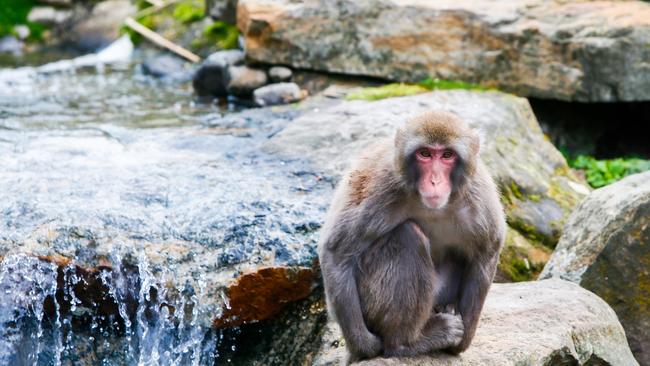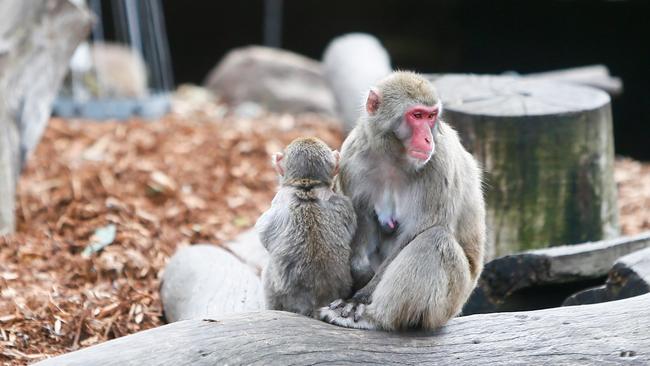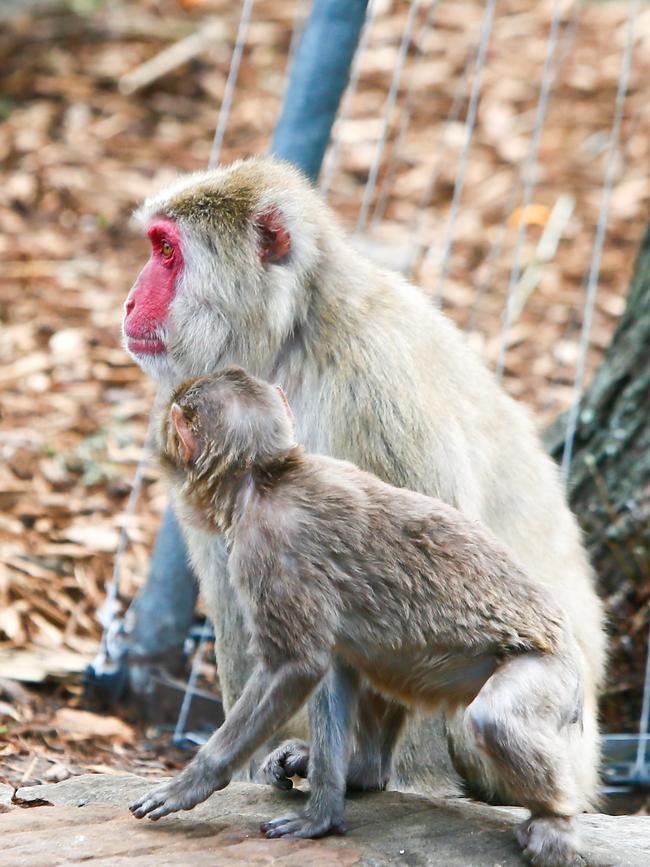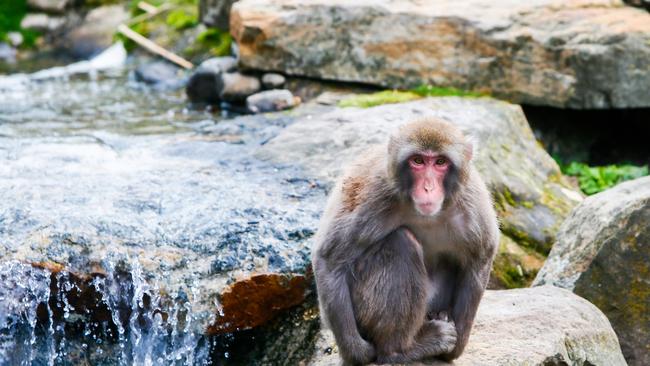Two decades in isolation might seem like a lot to some folk, but for a special group of Tassie residents who have dodged death, plotted escapes and continued to thrive, it’s all par for the course. Q&A ABOUT LAUNCESTON’S ENIGMATIC MONKEYS >>
Launceston’s City Park macaques were almost euthanised 20 years ago due to a Herpes B outbreak.
But, the City of Launceston Council opted to continue caring for the famous monkeys after an uprising in community support.
A new enclosure was built so caretakers could practice safe “distanced nursing”.
Despite the turmoil, the monkey troop has since managed great success in leading long and healthy lives and maintaining their popularity among Tasmanians and visitors alike.
Such is there fame that the council could change the name of its historic City Park to ‘The Monkey Park’ and nobody would notice.
There have been monkeys at City Park since the late 1800s, but the novelty has never worn off for Apple Islanders who still puzzle and ponder over the public display.
Every question you’ve ever wondered about Launceston’s City Park monkeys has been answered below with the help of head gardener and monkey keeper, Wally Medwin.

1. One of the biggest surprises to people is their diet......
The four of the park’s full-time staff cook up dishes for the macaques you or I might envy.
Their menu includes roast chicken, scrambled eggs, 8-10kg of fresh fruit and vegetables, each day, ‘primate cake’ and popcorn.
2. Do the monkeys have names?
The caretakers identify each character more by their behavioural traits than names.
Like Tappy, who knocks on the inside of the enclosure door for food.
3. Have they ever escaped?
In the 1980s the night enclosure was broken into and several of the braver macaques escaped. Mr Medwin believed three left the City Park site and the rest stayed on the roof unsure what to do. They were all captured and safely returned home. It was rumoured one made it to George St, but that has not been verified.

4. Is being a monkey keeper fun?
It turns out being monkey keeper is not as fun as you might think and certainly not for everyone.
“It stinks out the back,” Mr Medwin said.
“The public think we’re out in the backyard picking them up, but you can’t do that.
“It’s not that type of care you are providing for them, but you can cook for them.”
5. What happens to the monkeys when Festivale is on?
The troop don’t shy away from a party. They are always out during the day. They only spend the day inside a couple of days each year, on maintenance days.
6. What happens to the money thrown into the moat surrounding the monkey’s island?
The monkeys use it to invest in cryptocurrency. I’m just monkeying around. It all goes back into enriching the monkey program.

7. Where do they sleep?
Behind their outdoor enclosure on public display is their airconditioned indoor enclosure where they cuddle up in small groups.
8. How do they cope with Launceston’s climate?
The monkeys have acclimatised over generations, but they have never feared the cold. The cool climate macaques come from the snowy mountains.
“Although when we had snow a couple of months ago they did not have a clue what was going on,” says Mr Medwin.
9. Will the troop keep breeding for future generations?
Yes. The council has a breeding program in place, with breeding males brought in who were not part of the original troop.

10. When did the current troop come to Tasmania?
Ten monkeys arrived in Launceston in 1980 from the Japanese Monkey Centre. The migration south was made possible with help from Launceston’s sister city Ikedo, the Fujii Keora company and fundraising by children of both cities.
11. What’s the go with the virus?
Testing was done decades ago and found less than half were found to carry the Herpes B virus strain and it is now assumed they all have it.
In 2000, the troop were nearly put down do to the disease.
But they were saved in part due to community outcry.
It does not effect the monkeys much and presents as sores around the mouth like coldsores. Mr Medwin said they do not become sick or die due to the virus, but generally live 30 good years in the park.
He said the monkeys only show the virus when they’re stressed
“That’s why we put so much effort into making sure they’re happy,” he said.
12. Can the virus be transferred to humans?
Yes, in fact it can be deadly to humans. It is transferred through bodily fluids, however the number of recorded transfers is incredibly low.
“That’s why we’ve got the best safety gear we can get our hands on to clean and we do what we call distanced nursing,” Mr Medwin said.
“Anything that has to be done is done at a distance.”
The currently enclosure was built so the caretakers could look after the monkeys safely.

13. What happens if I drop something in the enclosure?
Bad luck! Soft toys, dummies, hats and sunglasses are among the most common items dropped into the enclosure, but Mr Medwin says once its in “it’s pretty much gone”.
The caretakers can’t enter the enclosure during the day to retrieve things.
14. Is it cruel to keep them in captivity?
Mr Medwin says staff have worked hard to show the community that they’re well looked after.
“They are not just caged animals,” he said.
“We’ve had people from Japan who say it’s one of the best enclosures they’ve seen for them. “It’s just about managing their numbers and managing how they’re looked after.”
15. How did Mr Medwin come to be a monkey keeper?
Mr Medwin is a qualified horticulturalist who worked at the park for several years under the previous head gardener, Dale Poke.
Mr Poke retired late last year after 20 years looking after the monkeys.


16. What training is required to look after the monkeys?
The team of long-term employees have all done various degrees of training in-house and out and between them are decades of knowledge and experience.
Mr Medwin was due to further his training with a course at Melbourne Zoo and Taronga Zoo in Sydney this year, but due to the COVID-19 pandemic, that has been put on hold.
The monkeys are also looked after by a local vet who has cared for them passionately for more than 30 years.
“We’re very lucky to be able to have that relationship and knowledge,” Mr Medwin said.
17. What value do the monkeys bring the city of Launceston?
City of Launceston mayor Albert van Zetten says the City Park monkeys are highly valued by the community and people from all over Australia associate them with Launceston.
“They’ve been a part of our city for many years and generations of young Launceston residents have grown up with them,” he said.
“Our staff take the responsibility of caring for the monkeys very seriously.
They come up with some pretty novel ways to keep the monkeys happy, engaged and interested in their habitat, using toys, treats and a diverse diet.”
Cr van Zetten said on any given day walking through City Park you will find families who have stopped to spend some time watching the monkeys and children who are delighted to be able to see them up close.


Add your comment to this story
To join the conversation, please log in. Don't have an account? Register
Join the conversation, you are commenting as Logout
Ultimate guide to what’s on in Tassie this summer
Summer is coming! Make the most of the warmer weather with our go-to summer events guide – it’s packed with must-do Tassie activities to enliven your social calendar and kickstart 2026 in style
Gus Leighton – on sax – brings Tassie party vibes to the max
Whether he’s firing up a dancefloor, improvising in a jazz quartet or swinging kettlebells like a pro, Tasmanian saxophonist and gym-enthusiast Gus Leighton loves being the life of the party.